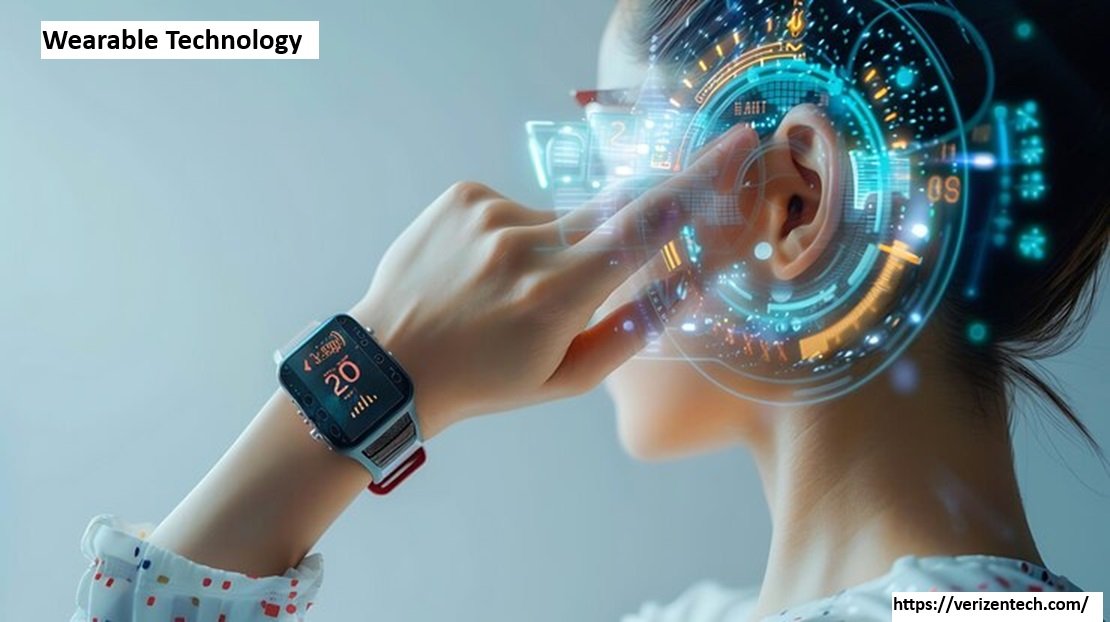Wearable technology has rapidly evolved from niche gadgets to essential tools that impact various aspects of daily life. From fitness trackers and smartwatches to advanced medical devices, wearables are becoming increasingly integrated into our routines. As technology continues to advance, the future of wearable technology holds even greater potential, promising to revolutionize industries and enhance the way we interact with the world. This article explores the trends and predictions that will shape the future of wearable technology.
Advancements in Health Monitoring
One of the most significant trends in wearable technology is the continued advancement in health monitoring. Wearables are becoming increasingly sophisticated, offering users the ability to track a wide range of health metrics in real time. Future developments in this area include:
- Advanced Biometrics: Wearables will move beyond tracking basic metrics like heart rate and steps to monitor more complex biomarkers, such as blood glucose levels, hydration status, and even early signs of chronic conditions. Devices like the Apple Watch are already exploring features like ECG monitoring, and future wearables may include sensors for continuous glucose monitoring and non-invasive blood pressure tracking.
- Personalized Health Insights: With the integration of AI and machine learning, wearables will provide more personalized health insights. These devices will analyze the data they collect to offer tailored recommendations for diet, exercise, and sleep, helping users optimize their health and well-being.
- Preventive Healthcare: The ability to detect early signs of illness through continuous monitoring will lead to a shift towards preventive healthcare. Wearables could alert users to potential health issues before they become serious, allowing for timely intervention and reducing the burden on healthcare systems.
As health monitoring becomes more advanced, wearables will play a crucial role in enabling individuals to take control of their health, potentially leading to longer and healthier lives.
Integration with Augmented Reality (AR) and Virtual Reality (VR)
The convergence of wearable technology with augmented reality (AR) and virtual reality (VR) is another trend that will shape the future. This integration will open up new possibilities in various fields, including entertainment, education, and workplace training.
- Smart Glasses: AR-enabled smart glasses are expected to become more prevalent, offering users an immersive experience by overlaying digital information in the real world. Companies like Google and Apple are investing heavily in this technology, which could eventually replace smartphones as the primary means of interacting with digital content.
- VR Wearables: The future of VR wearables will go beyond headsets to include haptic suits, gloves, and other devices that allow users to physically interact with virtual environments. This technology will have applications in gaming, virtual meetings, and even remote surgery, providing a more immersive and interactive experience.
- Mixed Reality: The blending of AR and VR into mixed reality (MR) wearables will create new opportunities for education and training. Imagine students learning history by virtually walking through ancient cities or engineers receiving real-time guidance from remote experts while working on complex machinery.
The integration of wearables with AR and VR will revolutionize how we experience and interact with digital content, making it more immersive and engaging.
Wearables in the Workplace
As wearable technology continues to evolve, its adoption in the workplace is expected to increase. Wearables will enhance productivity, safety, and efficiency across various industries.
- Productivity Tools: Wearables like smartwatches and fitness trackers will be used to monitor employee wellness and productivity. For instance, devices could track stress levels and suggest breaks or relaxation exercises, leading to a healthier and more productive workforce.
- Safety Enhancements: In industries such as construction and manufacturing, wearables will play a crucial role in ensuring worker safety. Smart helmets, vests, and gloves equipped with sensors can monitor environmental conditions, detect potential hazards, and alert workers in real time. These devices could also track fatigue levels and prevent accidents caused by overexertion.
- Remote Collaboration: With the rise of remote work, wearables integrated with AR and VR technology will facilitate collaboration among distributed teams. Virtual meetings, training sessions, and project reviews will become more immersive and interactive, bridging the gap between remote and on-site workers.
The future of wearables in the workplace is promising, with potential applications that will improve both employee well-being and organizational efficiency.
Fashion and Aesthetics
As wearables become more integrated into daily life, the focus on fashion and aesthetics will grow. Future wearables will not only be functional but also stylish, blending seamlessly with personal fashion.
- Customizable Wearables: The ability to customize wearables to match individual preferences will become a significant trend. From interchangeable bands to personalized digital watch faces, wearables will be designed to reflect personal style.
- Smart Textiles: The development of smart textiles will allow wearable technology to be embedded directly into clothing. These textiles could monitor health metrics, adjust temperature, or even change color based on the environment. Fashion brands are already experimenting with smart clothing, and this trend is expected to grow in the coming years.
- Luxury Wearables: High-end fashion brands are entering the wearable tech market, offering luxury smartwatches, jewelry, and accessories. These products combine cutting-edge technology with premium materials, appealing to consumers who want both functionality and style.
The future of wearable technology will see a fusion of fashion and function, with devices that are not only technologically advanced but also aesthetically pleasing.
Wearables and Data Privacy
As wearable technology continues to evolve, concerns about data privacy and security will become more prominent. The future of wearables will be shaped by how these concerns are addressed.
- Data Encryption: To protect user data, future wearables will incorporate advanced encryption methods, ensuring that sensitive information, such as health metrics and location data, is secure from unauthorized access.
- User Control: Users will demand more control over their data, including the ability to decide which information is shared and with whom. Wearables will need to offer transparent data policies and easy-to-use privacy settings to meet these demands.
- Regulatory Compliance: As wearable technology becomes more widespread, governments will implement regulations to protect consumer privacy. Companies developing wearables will need to comply with these regulations, which may include stricter data protection standards and requirements for user consent.
The future of wearable technology will require a careful balance between innovation and privacy, ensuring that users can enjoy the benefits of wearables without compromising their data.
Wearables in Fitness and Sports
Fitness and sports have been at the forefront of wearable technology adoption, and this trend is expected to continue. Future wearables will offer even more advanced features for athletes and fitness enthusiasts.
- Precision Training: Wearables will provide athletes with precise data on their performance, including metrics like muscle activity, oxygen consumption, and recovery times. This data will enable more effective training regimens tailored to individual needs.
- Injury Prevention: By monitoring movement patterns and stress levels, wearables can help prevent injuries before they occur. For example, smart insoles could detect improper foot alignment and suggest corrective exercises to avoid injuries.
- Virtual Coaching: Future wearables will offer virtual coaching through AI-driven algorithms. These devices will analyze performance data in real time and provide personalized feedback, helping users improve their technique and achieve their fitness goals.
Wearable technology will continue to play a crucial role in fitness and sports, offering new ways to optimize performance and prevent injuries.
Environmental Sustainability
As concerns about environmental sustainability grow, wearable technology will need to adapt to meet these challenges. The future of wearables will include a focus on eco-friendly materials and practices.
- Sustainable Materials: Future wearables will be made from sustainable materials, such as recycled plastics, biodegradable components, and eco-friendly textiles. Companies will prioritize reducing the environmental impact of their products.
- Energy Efficiency: Wearables will become more energy-efficient, with longer battery life and the ability to recharge through alternative energy sources, such as solar power or kinetic energy.
- Recycling and Disposal: As wearables reach the end of their life cycle, there will be a greater emphasis on recycling and responsible disposal. Manufacturers will need to develop programs for recycling wearables and minimizing electronic waste.
The future of wearable technology will be shaped by a commitment to environmental sustainability, ensuring that these devices contribute to a greener planet.
The Role of AI in Wearables
Artificial intelligence (AI) will play a central role in the future of wearable technology. As AI continues to evolve, wearables will become more intelligent and capable of offering personalized experiences.
- Predictive Analytics: AI-powered wearables will analyze data to predict future trends, such as health risks or changes in fitness levels. This predictive capability will allow users to take proactive measures to maintain their health and well-being.
- Voice Assistants: Integration with AI-driven voice assistants, such as Siri or Google Assistant, will make wearables more interactive and user-friendly. Users will be able to control their devices, access information, and receive recommendations through simple voice commands.
- Continuous Learning: AI in wearables will continuously learn from user behavior, improving its accuracy and relevance over time. This learning capability will enhance the overall user experience, making wearables more intuitive and responsive.
AI will be a driving force in the future of wearable technology, enabling more personalized, intelligent, and adaptive devices.

Conclusion
The future of wearable technology is full of exciting possibilities. From advancements in health monitoring and integration with AR/VR to the adoption of sustainable practices and the central role of AI, wearables will continue to evolve and reshape various aspects of our lives. As these devices become more sophisticated, they will offer new opportunities for improving health, enhancing productivity, and creating more immersive experiences. However, the future of wearables will also require addressing challenges related to data privacy, sustainability, and user accessibility. By balancing innovation with responsibility, the future




